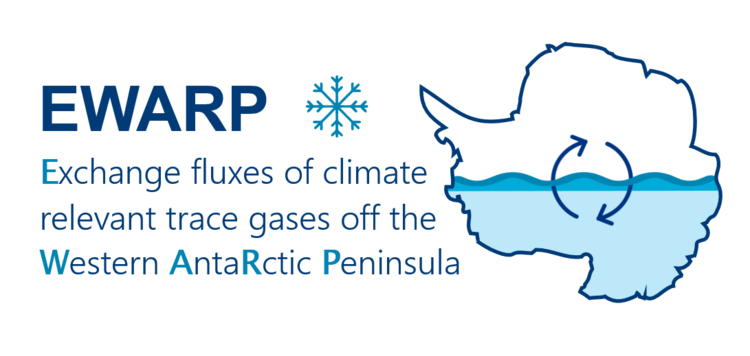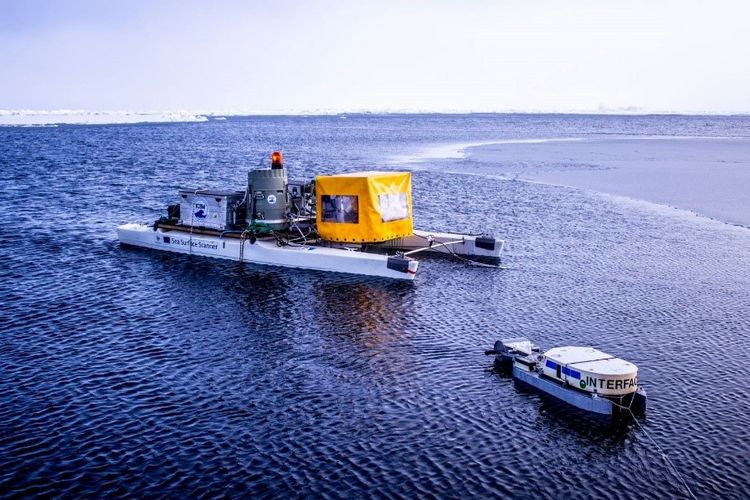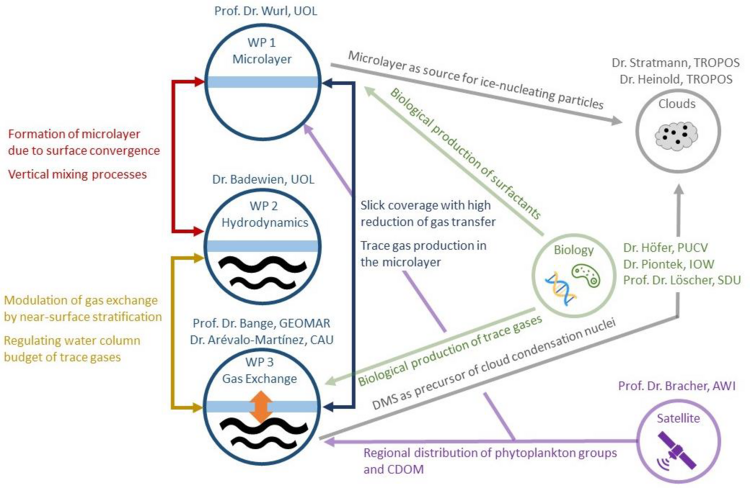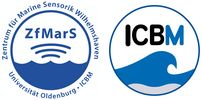
Prof. Dr. Oliver Wurl, ICBM, Uni Oldenburg
Dr. Thomas Badewien, ICBM, Uni Oldenburg
Prof. Dr. Hermann W. Bange, GEOMAR Helmholtz-Zentrum für Ozeanforschung Kiel
Dr. Damian L. Arévalo-Martínez, Radboud University, Nijmegen
Information about EWARP on the National Committee SCAR/IASC webpage


EWARP
Climate-relevant trace gases affect the Earth’s radiation balance by enhancing the greenhouse effect and altering the chemistry of the atmosphere. The Southern Ocean is one of the most productive ecosystems worldwide and a crucial region for the ocean's circulation. As such, it plays an essential role for the emissions and uptake of trace gases such as CH4, N2O and DMS. The Western Antarctic Peninsula (WAP) undergoes rapid warming with high variability of sea-ice coverage, photosynthetic activity and hydrodynamic properties. These parameters might affect the regional cycling of climate‑relevant trace gases itself, but also the properties of the sea-surface microlayer (SML) and the occurrence of slicks, which in turn influence the gas exchange with the atmosphere.
The EWARP project is funded by the German Research Foundation (DFG) as part of the priority programme 1158: Antarctic Research with Comparable Investigations in Arctic Sea Ice Areas. Scientists from the ICBM University of Oldenburg, GEOMAR Helmholtz Centre for Ocean Research Kiel as well as collaborators from research institutes and universities in Germany, Denmark and Chile will be involved in the project. We will address knowledge gaps in trace gas budgets, hydrodynamics and SML properties of the Southern Ocean. Our goal is to elucidate the controlling mechanisms for production and exchange fluxes of CH4, N2O and DMS in coastal and open ocean waters off the WAP.
During an extensive field campaign between November 2023 and January 2024, we will collect data sets and samples from the Bransfield Strait and Maxwell Bay, King George Island. A radio-controlled catamaran will be used to sample the undisturbed SML and to measure meteorological data. In order to investigate circulation patterns and hydrographic properties, Lagrangian surface drifters and CTD sensors will be used. Additionally to trace gas samples, bacterial gene inventories will be analysed to assess microbial production and removal pathways of trace gases. The photochemical production of trace gases directly in the SML will be investigated by incubating SML water under solar irradiation.
The highly dynamic environment of the WAP, including the complex formation of the microlayer in response to hydrodynamics and biological activity, requires a systematic observational approach as applied in EWARP. Overall, the understanding of trace gas dynamics in the WAP, as a reference region for the Southern Ocean, is essential for calculating the global budgets of these gases, as well as the assessment of potential changes in that region in response to ongoing climate change.
Objectives
- Assessing the magnitude and direction of trace gas fluxes under the influence of the sea‑surface microlayer as the ocean-atmosphere interface
- Understanding the major production pathways of trace gases
- Investigating the influence of changing ice conditions, solar radiation and primary production on the distribution of trace gases and the properties of the SML
- Exploring small-scale ocean currents and hydrodynamics and their interaction with trace gas dynamics
- Examine the physical and chemical properties of the SML and the underlying (bulk)water


